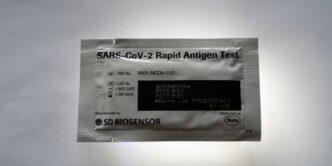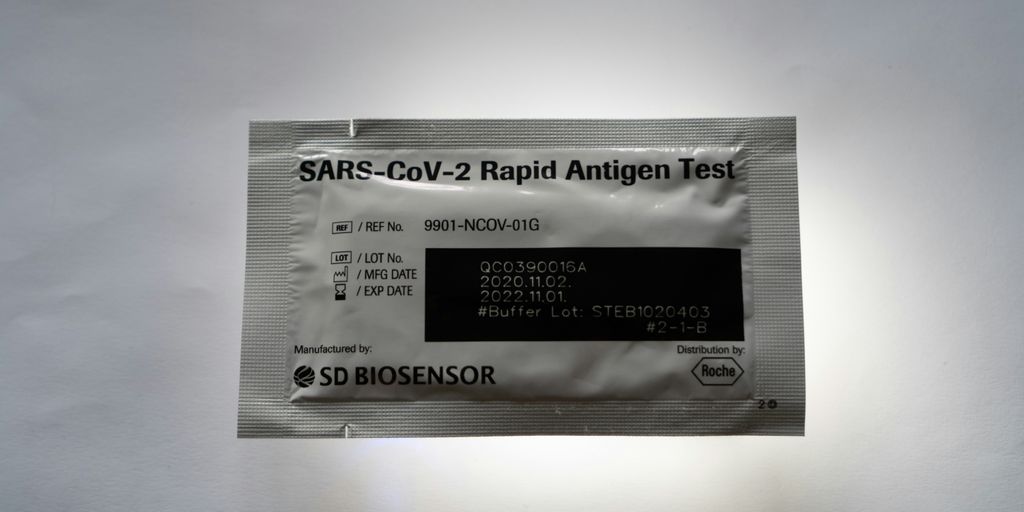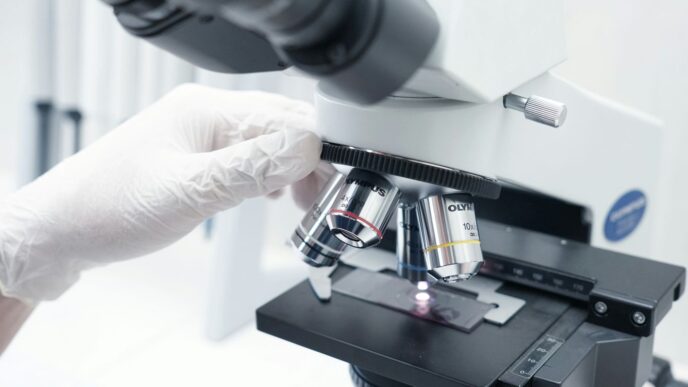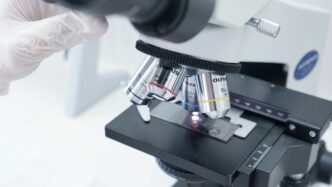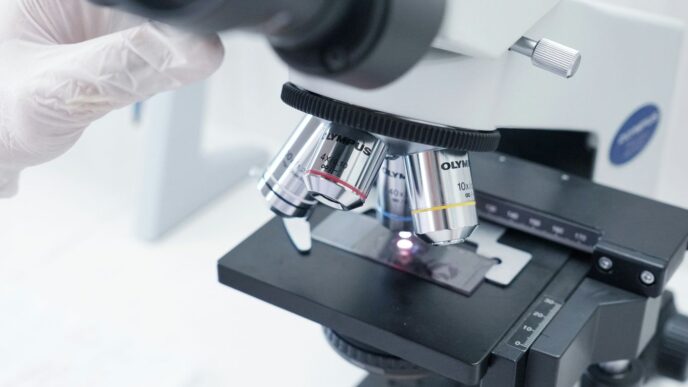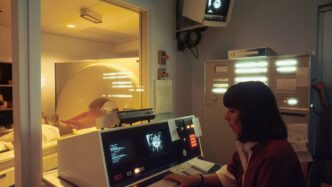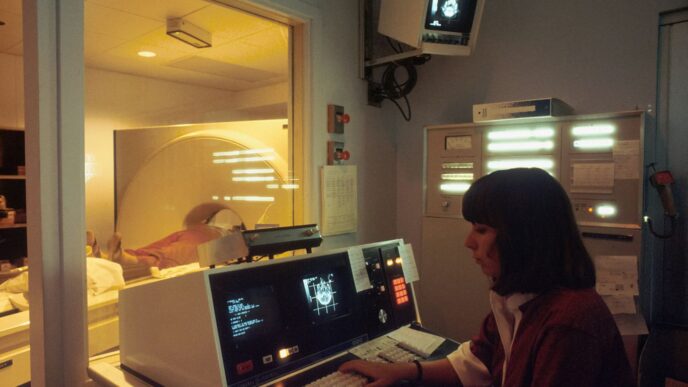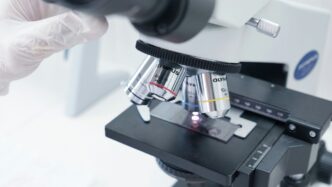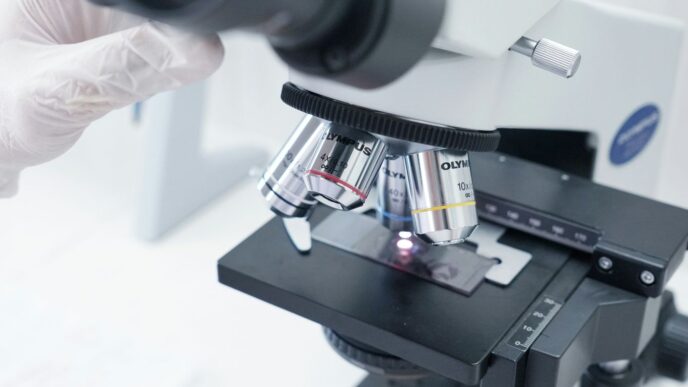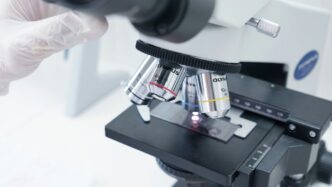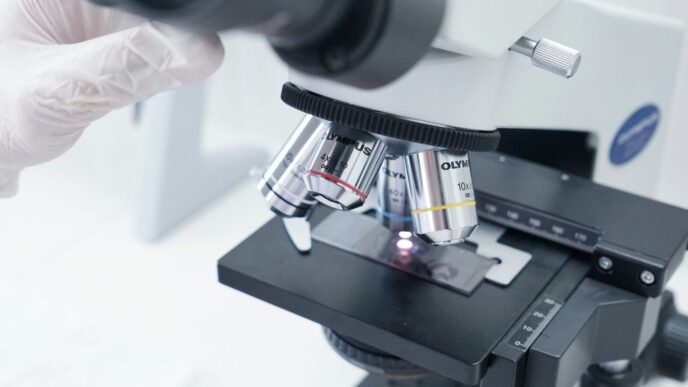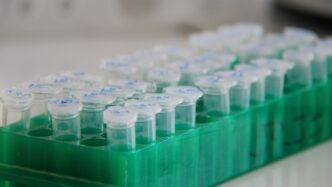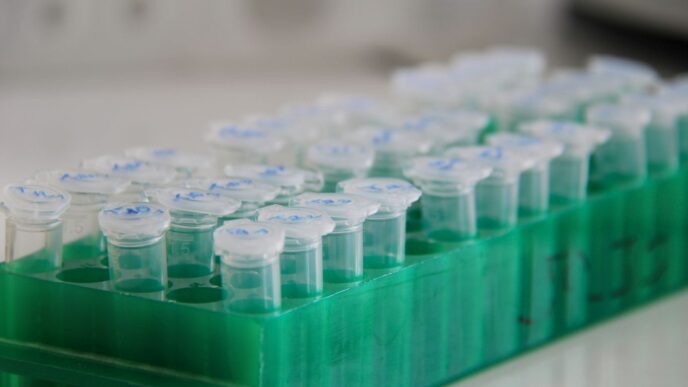Hospitals are always looking for ways to make things better. They want to keep patients safe, make sure everything runs smoothly, and use their stuff wisely. This is where RFID in hospitals comes in. It’s a technology that can really help out. We’re talking about making patient care better, managing medications, keeping track of equipment, and just making the whole hospital work more efficiently. It’s a pretty cool tool for modern healthcare.
Key Takeaways
- RFID helps hospitals keep patients safe by making sure they are identified correctly and by tracking them in real-time.
- RFID makes managing medicines easier by checking drugs automatically and keeping track of supplies.
- Hospitals can use RFID to know where their equipment is, stop things from getting lost, and make sure maintenance happens on time.
- RFID helps hospitals run better by automating tasks, managing beds, and cutting down on patient wait times.
- RFID also helps with surgeries, making sure everything is ready beforehand and that tools are accounted for in the operating room.
Enhancing Patient Safety with RFID in Hospitals

Patient safety is a top priority in any hospital setting. RFID technology is changing how hospitals approach this critical aspect of healthcare. It’s not just about doing things faster; it’s about making sure things are done right, every single time. Let’s look at how RFID is making a real difference.
Accurate Patient Identification
Misidentification can lead to serious medical errors. RFID wristbands are a simple but effective solution. These wristbands store patient information securely, ensuring that medical staff can quickly and accurately identify patients. Think about it: a quick scan confirms the patient’s identity and pulls up their medical records instantly. No more relying on handwritten notes or memory. This reduces the chances of errors in medication, treatment, and procedures. It’s a basic step, but it has a huge impact. RFID in healthcare is helping to solve this problem.
Real-Time Patient Tracking
Knowing where patients are at all times can be a game-changer, especially in large hospitals. RFID tags can track patient movement, optimizing bed management and predicting patient flow. This minimizes wait times and improves overall efficiency. Consider these benefits:
- Reduced wait times for patients needing beds.
- Improved staff response times to patient needs.
- Better resource allocation based on patient location.
It’s about making sure the right resources are available at the right place, at the right time. This is especially important in emergency situations.
Preventing Infant Mix-Ups
For newborns, the stakes are incredibly high. RFID tags provide an added layer of security, preventing infant mix-ups and unauthorized movement within the hospital. This technology offers peace of mind to parents and staff alike. Here’s how it works:
- RFID tags are attached to both the infant and the mother.
- Alerts are triggered if the tags are separated without authorization.
- Real-time tracking ensures the infant’s location is always known.
It’s a simple system, but it adds a significant level of protection. It’s about patient safety initiatives that make a real difference.
Streamlining Medication Management with RFID in Hospitals
Medication errors are a serious concern in hospitals, but RFID tech is stepping up to help. It’s not a magic bullet, but it can make a real difference in how meds are handled, from the pharmacy to the patient’s bedside. I remember when my grandma was in the hospital, and the nurses were always double-checking everything. With RFID, a lot of that manual work can be automated, freeing up nurses to focus on actual patient care.
Automated Drug Verification
RFID tags on medication packaging allow for instant verification of the drug, dosage, and expiration date. This is a big deal because it cuts down on the chance of giving the wrong medication. Think about it: a quick scan can confirm everything, reducing the risk of human error. Plus, it creates a digital record of every dose administered, which is super helpful for tracking and accountability. It’s like having a digital safety net.
Inventory Control and Restocking
Keeping track of medications is a constant headache for hospital pharmacies. RFID can automate this process, providing real-time visibility into inventory levels. No more manual counts or guessing when to reorder. The system can automatically alert staff when stock is low, improving inventory accuracy and even trigger automatic reorders. This not only saves time but also reduces the risk of running out of critical medications. Here’s a quick look at how RFID helps:
- Real-time tracking of medication quantities
- Automated alerts for low stock levels
- Reduced waste from expired medications
Preventing Drug Diversion
Drug diversion is a serious problem in healthcare, and RFID can play a role in preventing it. By tracking medications at every step, from delivery to administration, it becomes much harder for drugs to be stolen or misused. RFID-enabled cabinets and refrigerators can restrict access to certain medications, ensuring that only authorized personnel can access them. This adds an extra layer of security and helps to maintain a safe environment for patients. It’s not foolproof, but it’s a significant step in the right direction. RFID technology helps hospitals identify drug diversion quickly before patient safety is at risk.
Optimizing Asset Management with RFID in Hospitals
Ever spent ages looking for a specific piece of equipment in a hospital? It’s a common problem, and it wastes valuable time. RFID tech can really help out here. It’s not just about knowing where things are; it’s about making sure the right equipment is available when and where it’s needed. This can lead to big improvements in how hospitals run and, most importantly, patient care.
Real-Time Equipment Location
Imagine being able to see exactly where every piece of equipment is at any moment. That’s the power of RFID. RFID tags attached to equipment transmit their location, making it easy to find things quickly. No more frantic searches for that vital piece of machinery! This saves time and reduces frustration for staff. Think about how much faster nurses could respond to emergencies if they didn’t have to hunt down equipment. Plus, it helps with inventory management, so you always know what you have on hand.
Preventing Loss and Theft
Hospitals are busy places, and unfortunately, equipment can sometimes go missing. RFID can act as a deterrent and a tracking system. If something is moved without authorization, alerts can be triggered. This helps prevent theft and ensures that valuable assets stay where they belong. It’s like having a security system for your equipment. This is especially important for expensive or specialized items. For example, patient safety and risk management software can be used to track high-value assets and prevent their loss.
Ensuring Maintenance Schedules
Keeping medical equipment in good working order is crucial for patient safety. RFID can help automate maintenance schedules. By tracking usage and location, the system can automatically schedule maintenance when needed. This ensures that equipment is always ready for use and reduces the risk of breakdowns. It also helps with compliance, as it provides a record of maintenance activities. Think about it: no more relying on manual logs or guesswork. Here’s a quick look at how RFID can improve maintenance:
- Automated scheduling based on usage.
- Real-time tracking of maintenance activities.
- Reduced downtime due to proactive maintenance.
- Improved compliance with regulatory requirements.
- Extended lifespan of equipment.
Improving Operational Efficiency with RFID in Hospitals
RFID tech isn’t just about tracking things; it’s about making hospitals run smoother. It’s about cutting down on wasted time and resources, so staff can focus on what really matters: patients. I think we can all agree that’s a good thing.
Workflow Automation and Scheduling
RFID can automate a lot of the tedious tasks that bog down hospital staff. Think about it: manually checking inventory, searching for equipment, or updating patient locations. All that takes time. RFID automates these processes, freeing up staff to focus on patient care.
- Automated alerts can notify staff when rooms need cleaning or equipment needs maintenance. This ensures a cleaner, safer environment for patients and staff.
- RFID integration streamlines scheduling and room availability management. No more double-booking rooms or scrambling to find available equipment.
- RFID can automatically update inventory levels of surgical supplies, ensuring that staff always have the necessary tools. This reduces delays and improves efficiency in the operating room.
Optimizing Bed Management
Getting patients into the right bed quickly is a big deal. RFID can help hospitals optimize bed management by tracking bed availability and patient flow in real-time. This means less waiting around for patients and better use of hospital resources.
- Real-time tracking of bed occupancy allows for faster patient placement.
- Automated alerts can notify staff when beds become available, reducing turnaround time.
- Data analysis can identify bottlenecks in the bed management process, allowing for targeted improvements.
Reducing Patient Waiting Times
No one likes waiting, especially when they’re not feeling well. RFID can help reduce patient waiting times by streamlining various processes, from admission to discharge. This leads to happier patients and a more efficient hospital.
- RFID-enabled patient tracking can reduce the time it takes to locate patients for tests or procedures.
- Automated check-in and check-out processes can speed up admission and discharge.
- Real-time data on patient flow can help identify and address bottlenecks in the system.
Here’s a simple example of how RFID can impact patient wait times:
| Process | Without RFID | With RFID | Time Saved |
|---|---|---|---|
| Patient Check-in | 15 minutes | 5 minutes | 10 minutes |
| Equipment Search | 10 minutes | 2 minutes | 8 minutes |
Advancing Surgical Procedures with RFID in Hospitals
RFID tech is making waves in surgery, and honestly, it’s about time. We’re talking about serious improvements in how things run, from prepping for surgery to making sure everything goes smoothly in the operating room and beyond. It’s not just about fancy gadgets; it’s about making surgery safer and more efficient for everyone involved.
Enhanced Pre-Operative Preparedness
Getting ready for surgery can be a stressful time, but RFID is helping to streamline the process. Imagine using RFID tags on patient records and medical devices to give healthcare pros real-time visibility. This means they can quickly double-check everything – assessments, tests, the whole shebang – before the surgery even starts. No more last-minute scrambles or delays because someone can’t find the right paperwork. It’s all about being prepared and making sure the patient is ready to go.
Precision and Safety in Operating Rooms
Operating rooms are high-stakes environments, and RFID is stepping up to make them safer. Think about it: RFID-tagged instruments and supplies can be tracked automatically. This cuts down on errors during surgery. Plus, asset management systems ensure sterile equipment is always ready to go. It’s like having an extra set of eyes on everything, making sure nothing gets missed and that patient safety is the top priority. Adventist Health White Memorial saved $1 million by using RFID-enabled workflow software to optimize surgical procedures.
Post-Operative Resource Availability
After surgery, it’s all about monitoring and making sure the patient recovers smoothly. RFID-enabled wristbands or tags help healthcare teams keep tabs on patients and track their progress. This tech also helps track medication and provides real-time insights into how the patient is doing. This proactive approach minimizes the occurrence of stockouts, reduces waste, and ensures the continuous availability of critical resources when required. It’s about making sure the right resources are available when they’re needed, so patients can focus on getting better.
Boosting Supply Chain Optimization with RFID in Hospitals
RFID tech isn’t just for tracking patients and equipment; it’s a game-changer for hospital supply chains too. Think about it: hospitals need a constant flow of supplies, from bandages to specialized surgical tools. Any disruption can impact patient care, so keeping things running smoothly is super important. RFID helps make that happen.
Accurate Inventory Management
RFID provides real-time visibility into stock levels, reducing the risk of shortages and overstocking. Imagine a pharmacy instantly knowing the quantity of each medication on hand. No more frantic searches or last-minute scrambles! RFID tags on medical supplies and equipment enable efficient inventory tracking, giving hospitals a clear picture of what they have and where it is. This also helps prevent waste from expired items, leading to better resource use and budget allocation. Automated data collection as items move in and out of storage areas eliminates human error associated with manual data entry, ensuring accurate, up-to-date information is always available.
Combating Counterfeit Products
Hospitals need to be sure that the medical supplies they’re using are authentic and safe. RFID can help with that. By tracking products from the manufacturer to the hospital, RFID makes it harder for counterfeit items to slip into the supply chain. This is especially important for medications and high-value equipment. RFID improves inventory accuracy by automating tracking and monitoring supply usage. It also helps hospitals comply with regulations like the Drug Supply Chain Security Act, ensuring that medications and equipment are authentic and properly documented.
Ensuring Continuous Resource Availability
RFID helps hospitals avoid stockouts and delays, ensuring that healthcare professionals have the resources they need when they need them. This means better patient care and fewer disruptions. RFID enhances the traceability of supplies across the entire supply chain, from manufacturers to healthcare providers. This increased transparency helps in better planning and coordination. For example, a clinic can track a shipment of vaccines from the supplier to their facility, ensuring timely delivery and proper handling, ultimately improving service delivery and patient outcomes.
Leveraging Data Analytics for Better Care with RFID in Hospitals
RFID isn’t just about tracking things; it’s about gathering data. And that data, when analyzed correctly, can seriously improve patient care. Think about it: real-time insights into patient flow, equipment usage, and medication administration. It’s a goldmine! Let’s see how we can use that data.
Real-Time Data Analysis
RFID systems generate a constant stream of data that can be analyzed in real-time to identify trends and patterns. This allows hospitals to respond quickly to changing conditions and make informed decisions. For example, if the RFID and AI system shows a sudden increase in patient arrivals in the emergency department, staff can be reallocated to handle the surge. It’s about being proactive, not reactive.
Optimizing Resource Allocation
With RFID data, hospitals can allocate resources more efficiently. No more guessing about where equipment is needed most or how many staff members should be on duty.
- Track equipment usage to identify underutilized assets.
- Monitor patient flow to optimize staffing levels.
- Analyze medication administration patterns to reduce waste.
Here’s a simple example of how RFID data can help optimize bed allocation:
| Bed Type | Average Occupancy Rate (Without RFID) | Average Occupancy Rate (With RFID) |
|---|---|---|
| ICU | 85% | 92% |
| General | 70% | 78% |
Supporting Decision Making
RFID data provides a solid foundation for making better decisions at all levels of the hospital. From frontline staff to senior management, everyone can benefit from having access to accurate, up-to-date information. This can lead to:
- Improved patient outcomes
- Reduced costs
- Increased efficiency
Wrapping It Up: RFID’s Big Role in Hospitals
So, we’ve talked a lot about how RFID is changing things in hospitals. It’s not just some fancy tech; it’s really helping out with a bunch of stuff, from keeping track of patients and equipment to making sure meds are given out right. Hospitals are seeing real improvements, like things running smoother and patients being safer. It’s pretty clear that RFID is a game-changer for healthcare, making everything work better for everyone involved.
Frequently Asked Questions
Why Are RFID Chips Being Used in Hospitals?
RFID chips are used in hospitals to make things run smoother, keep patients safe, and manage resources better. They help track patients, staff, and medical tools. They also cut down on mistakes with medicine, make keeping track of supplies easier, and help hospitals follow health rules. This tech helps hospitals work better, keeps patients safer, and makes sure important tools and info are always ready when needed.
What Is an RFID Tag in a Hospital?
An RFID tag in a hospital is a small device that uses radio waves to send information. It’s attached to patients, staff, or equipment. These tags help hospitals know where things are, manage their supplies, make sure patients get the right medicine, and generally work more efficiently. This all leads to better patient care and hospital management.
How Does RFID Technology Improve Medication Management in Hospitals?
RFID tech makes handling medicine better by keeping close tabs on drugs and making sure they’re given out correctly. Every medicine gets an RFID chip. This chip is scanned to check if it’s the right drug, the right amount, and for the right patient, which lowers the chance of errors. This system also updates how much medicine is on hand in real-time, tells staff when supplies are low, and helps stop medicine from being stolen. This keeps patients safe and helps the hospital run well.
How Does RFID Enhance Hospital Asset Management?
RFID makes managing hospital equipment much better by letting staff know exactly where medical tools and supplies are. This tech helps find devices quickly, so staff don’t waste time looking for them. It also stops equipment from getting lost or stolen, makes sure maintenance and check-ups happen on time, and helps keep the right amount of supplies in stock. Because of this, hospitals can spend less money, work more efficiently, and always have important equipment ready when needed.
How Does RFID Technology Improve Patient Care?
RFID helps make patient care better in many ways. It makes sure patients are correctly identified, tracks their location for safety, and helps prevent mix-ups, especially with babies. It also improves how medicine is given out, manages hospital supplies, and keeps track of equipment. All these things together make hospitals safer, more organized, and more efficient, which means patients get better care.
How Does RFID Technology Work in a Hospital Setting?
RFID systems use small tags that send out radio signals. These signals are picked up by special readers. In a hospital, these tags can be put on patient wristbands, medical equipment, or medicine. The readers then track where these items are, what they are, and other important details. This information helps staff manage everything from patient flow to inventory, making the hospital work more smoothly and safely.

